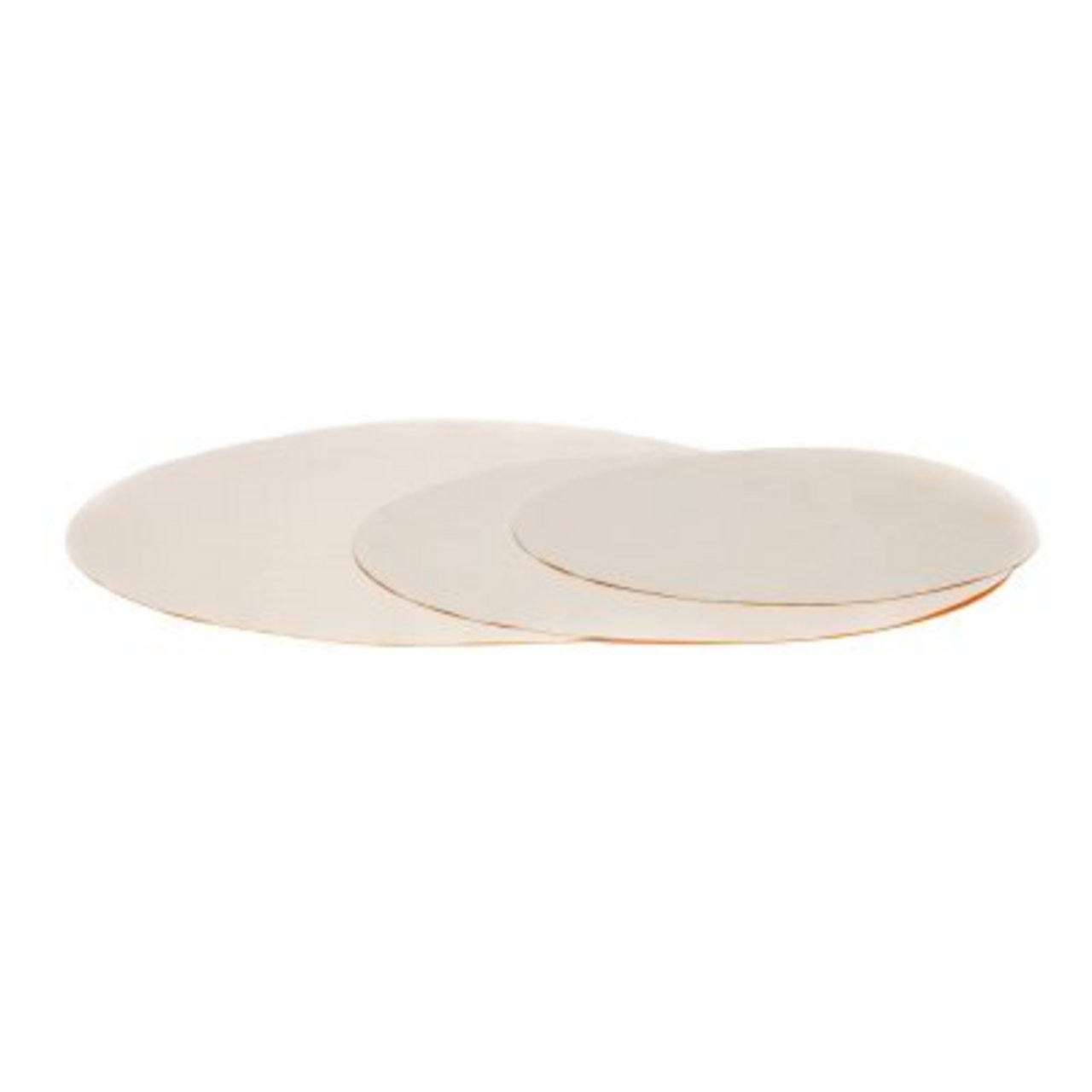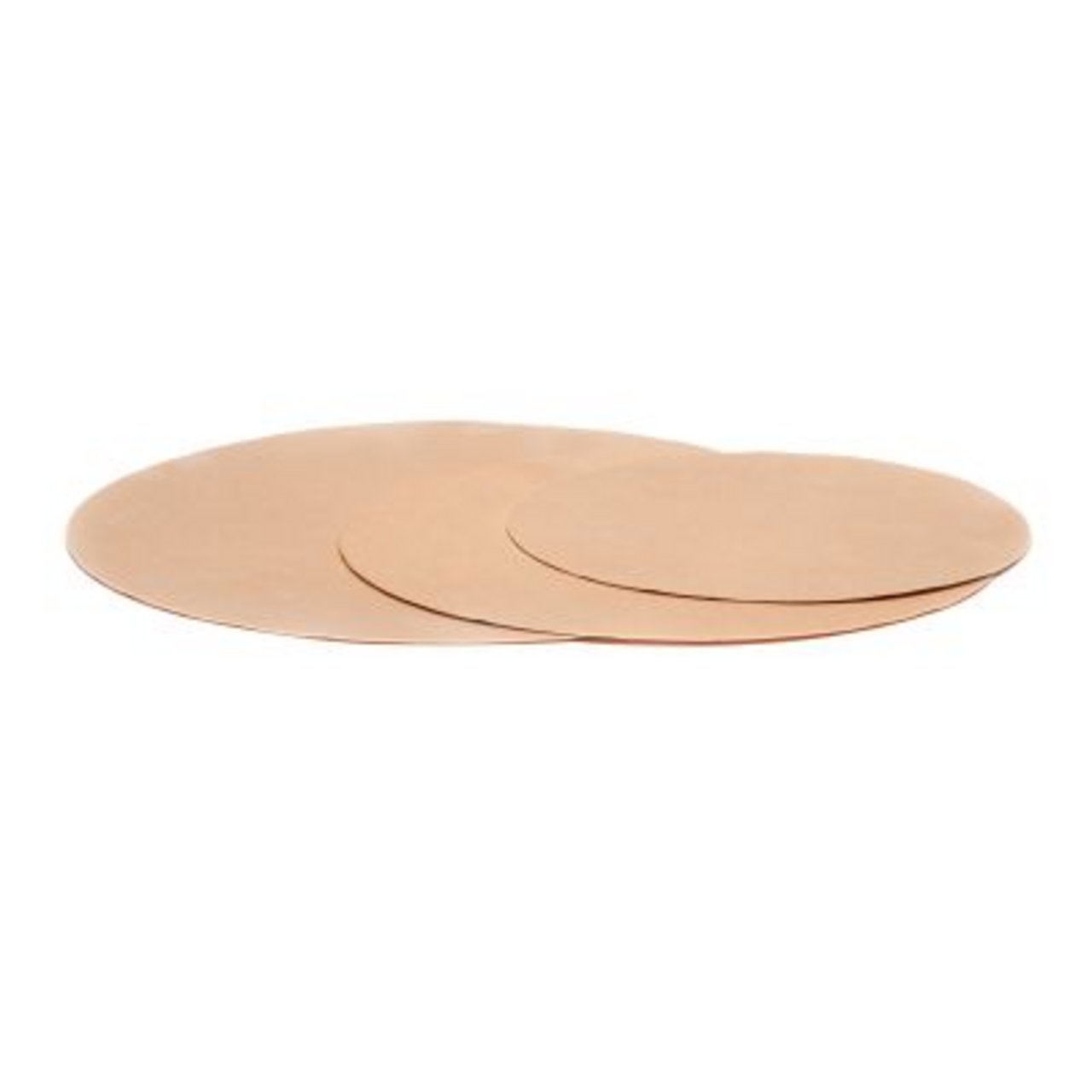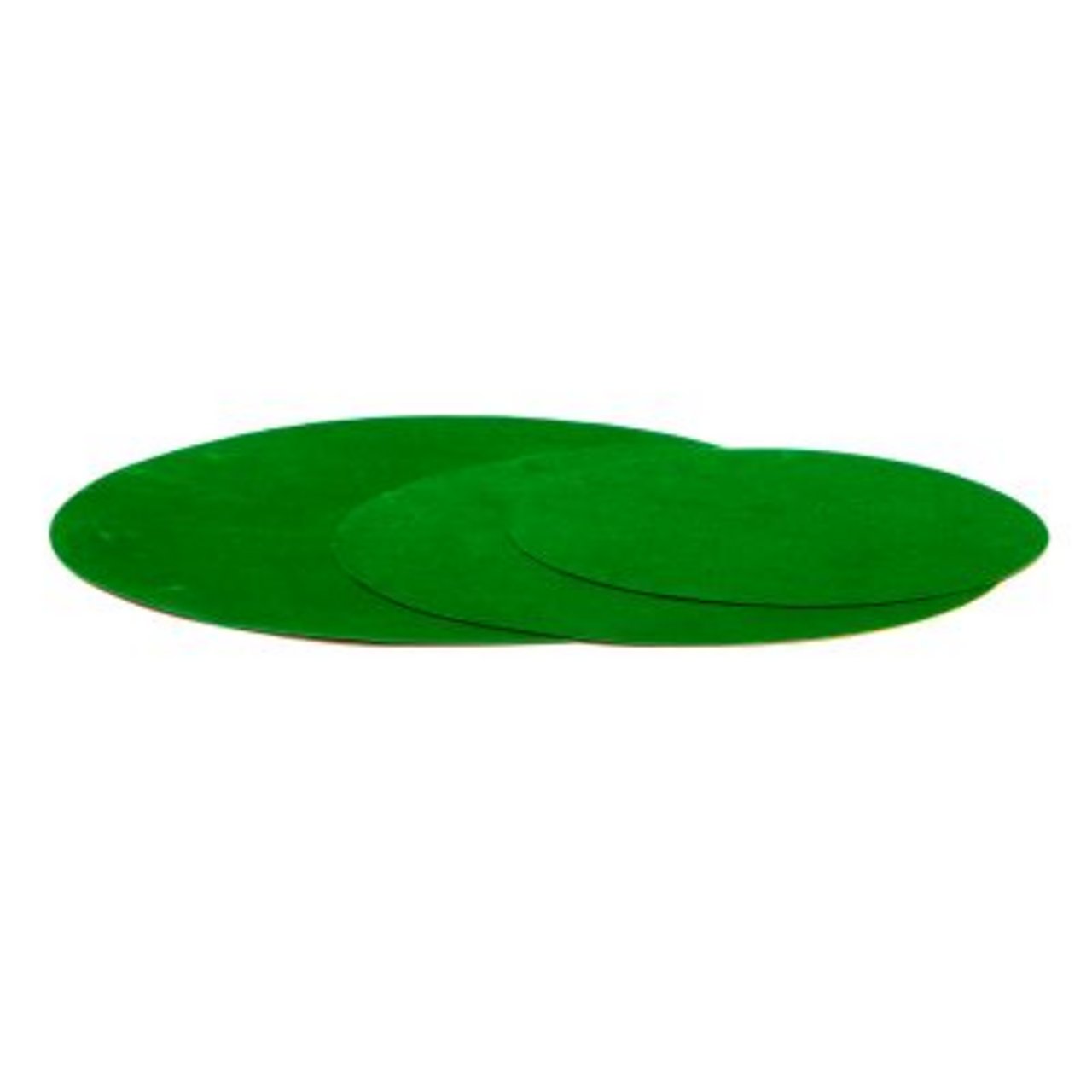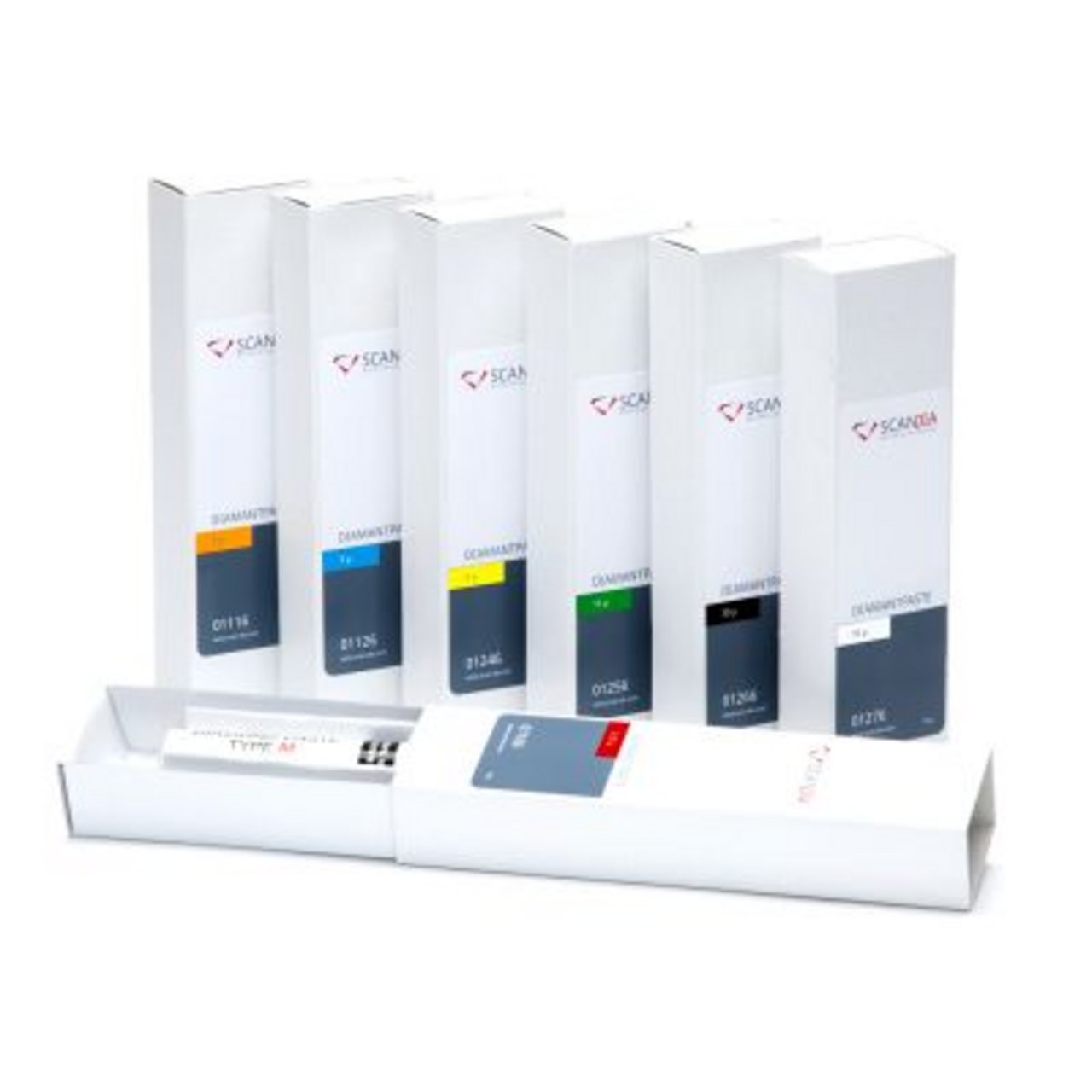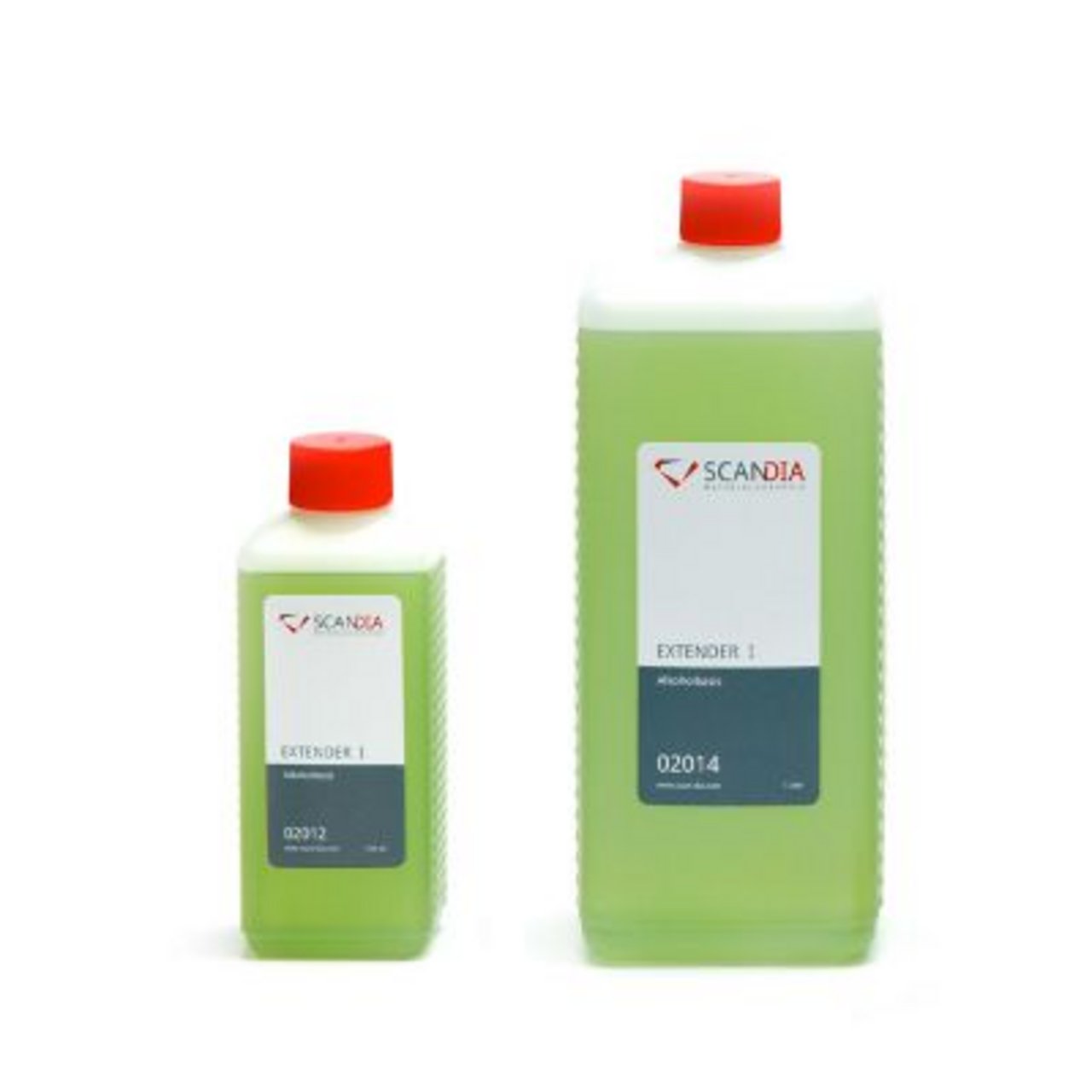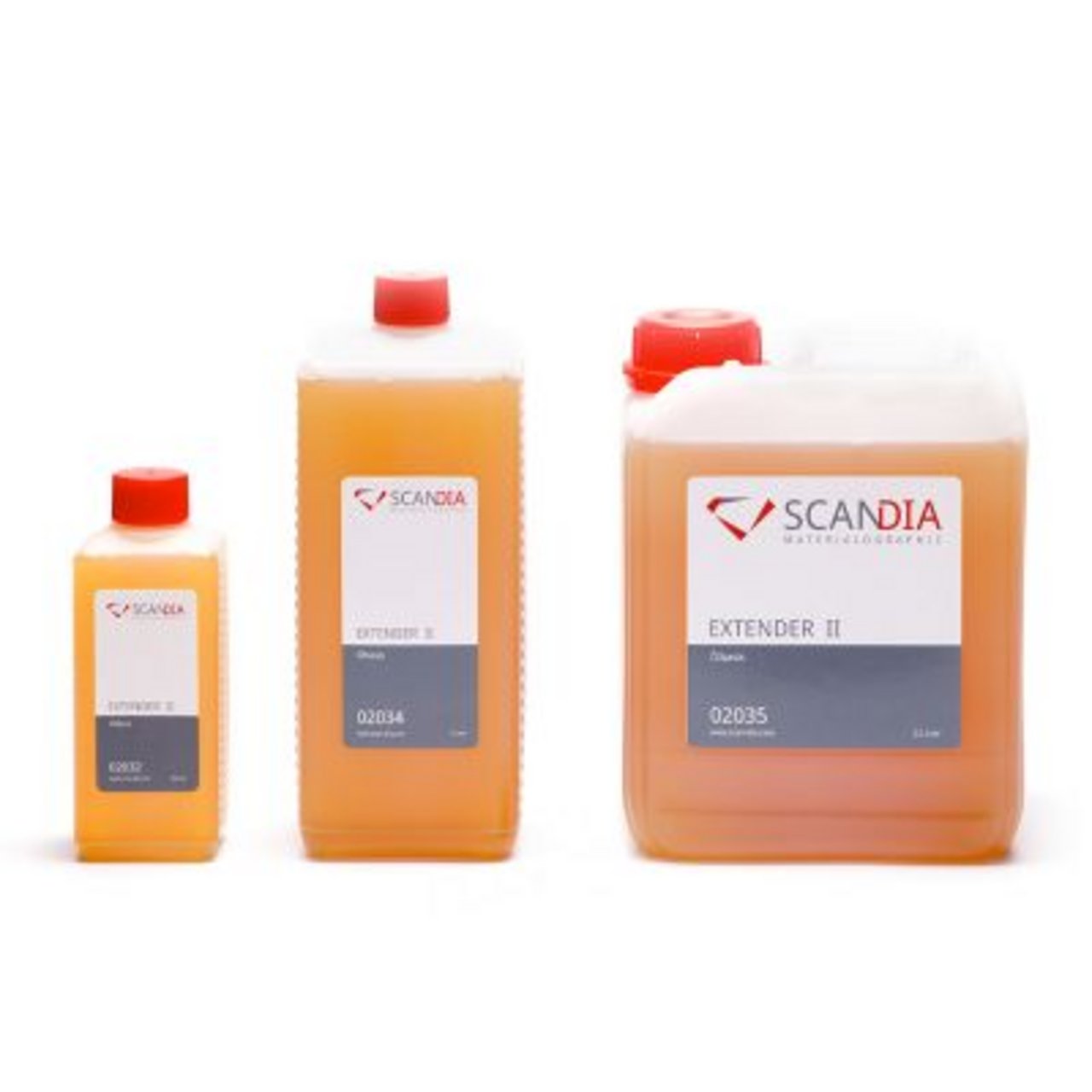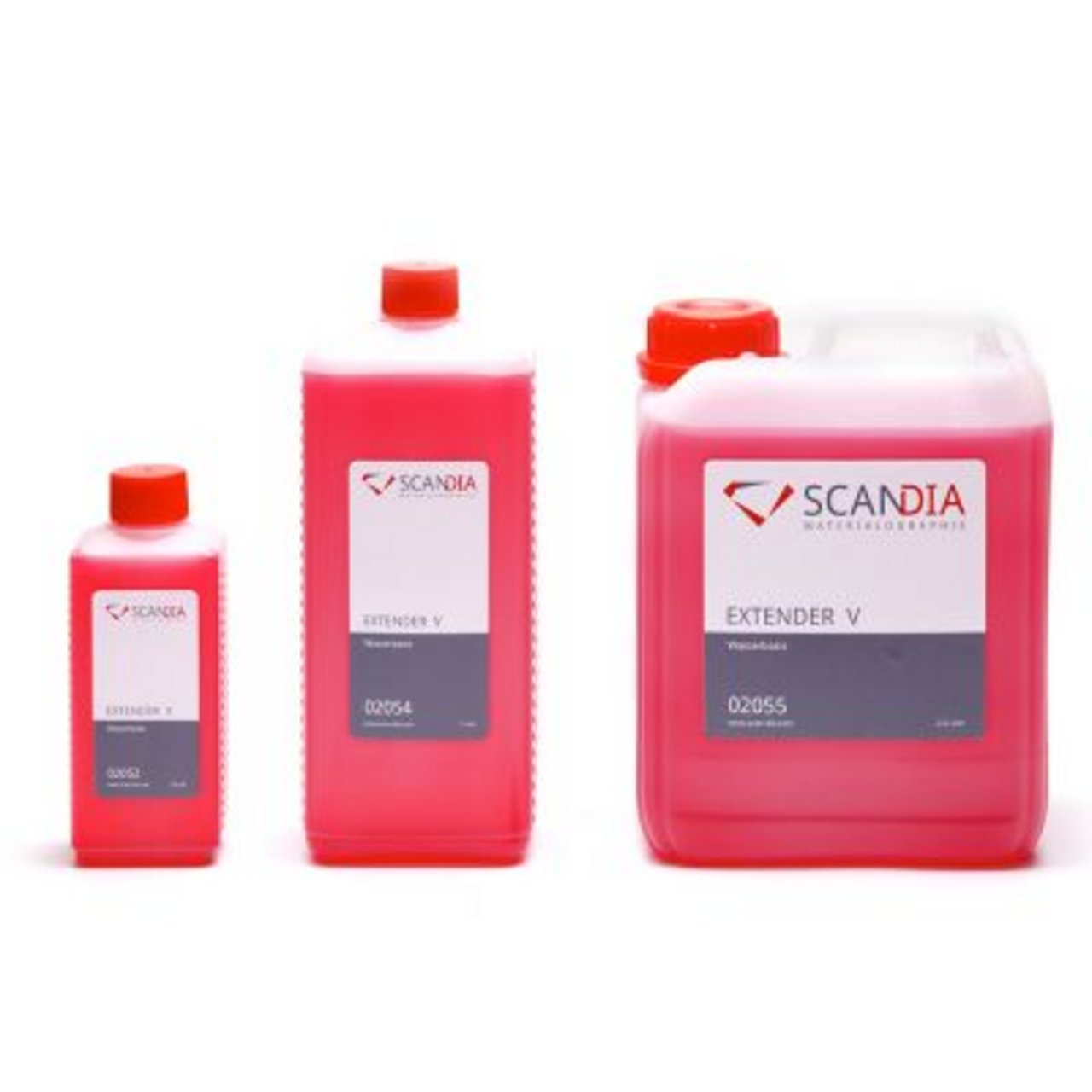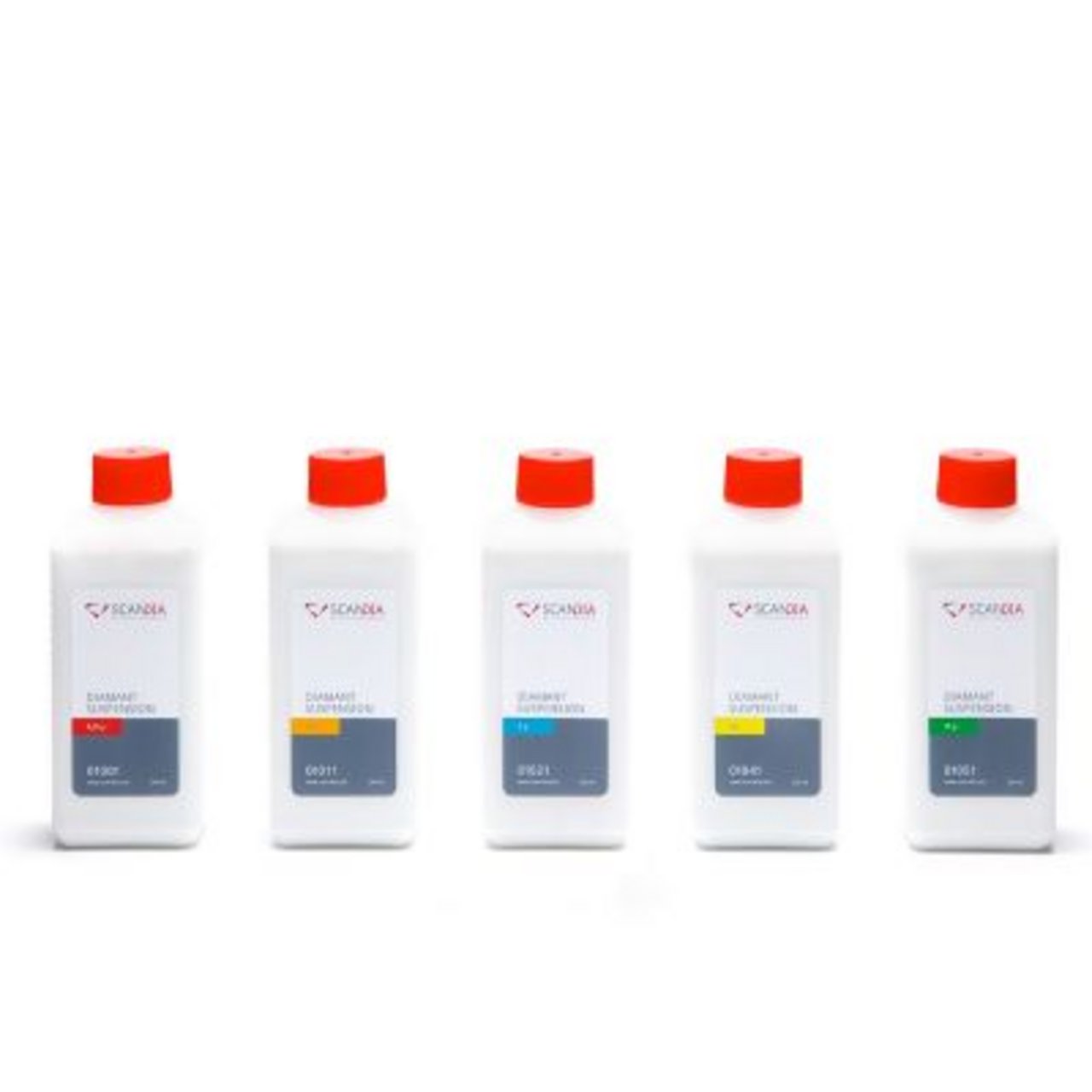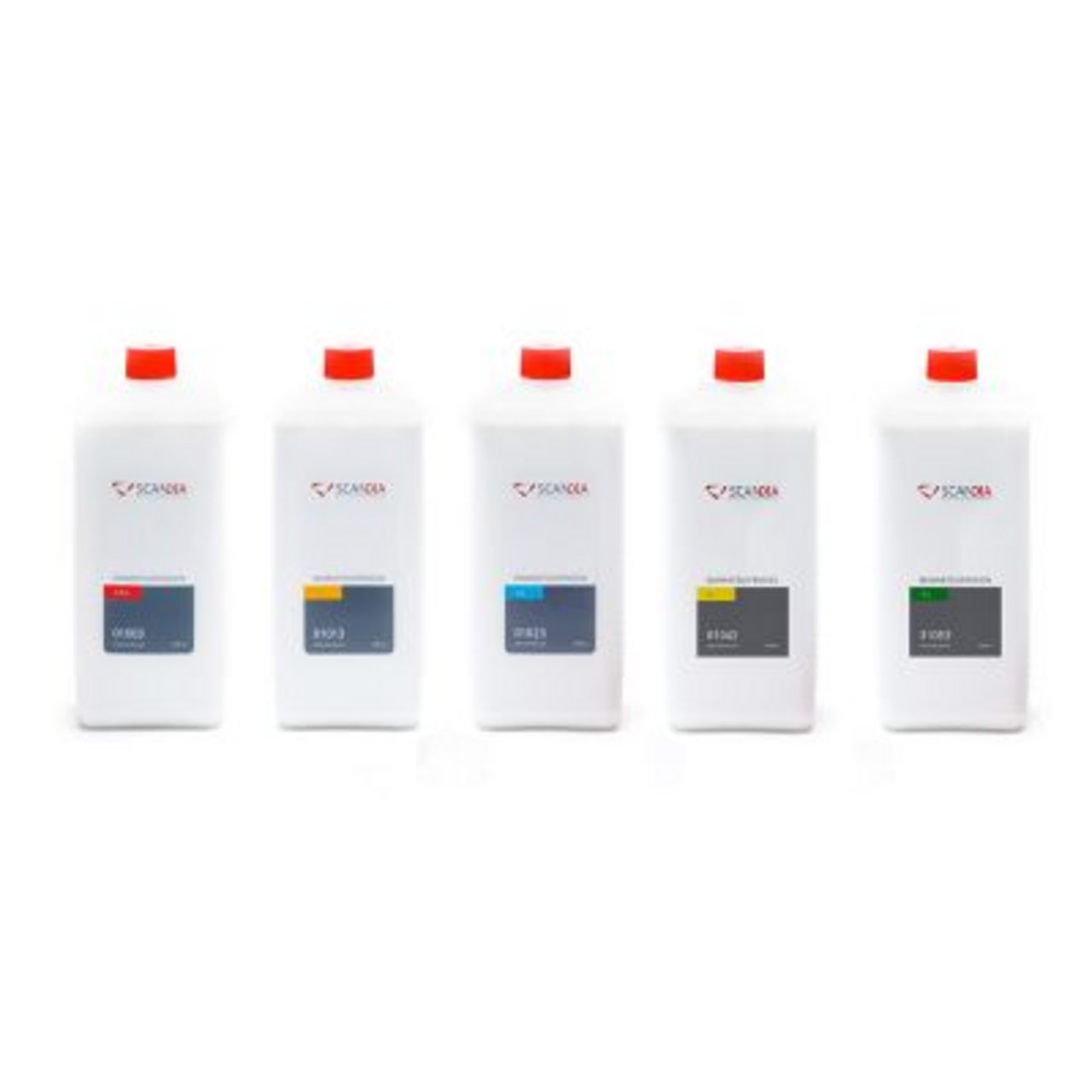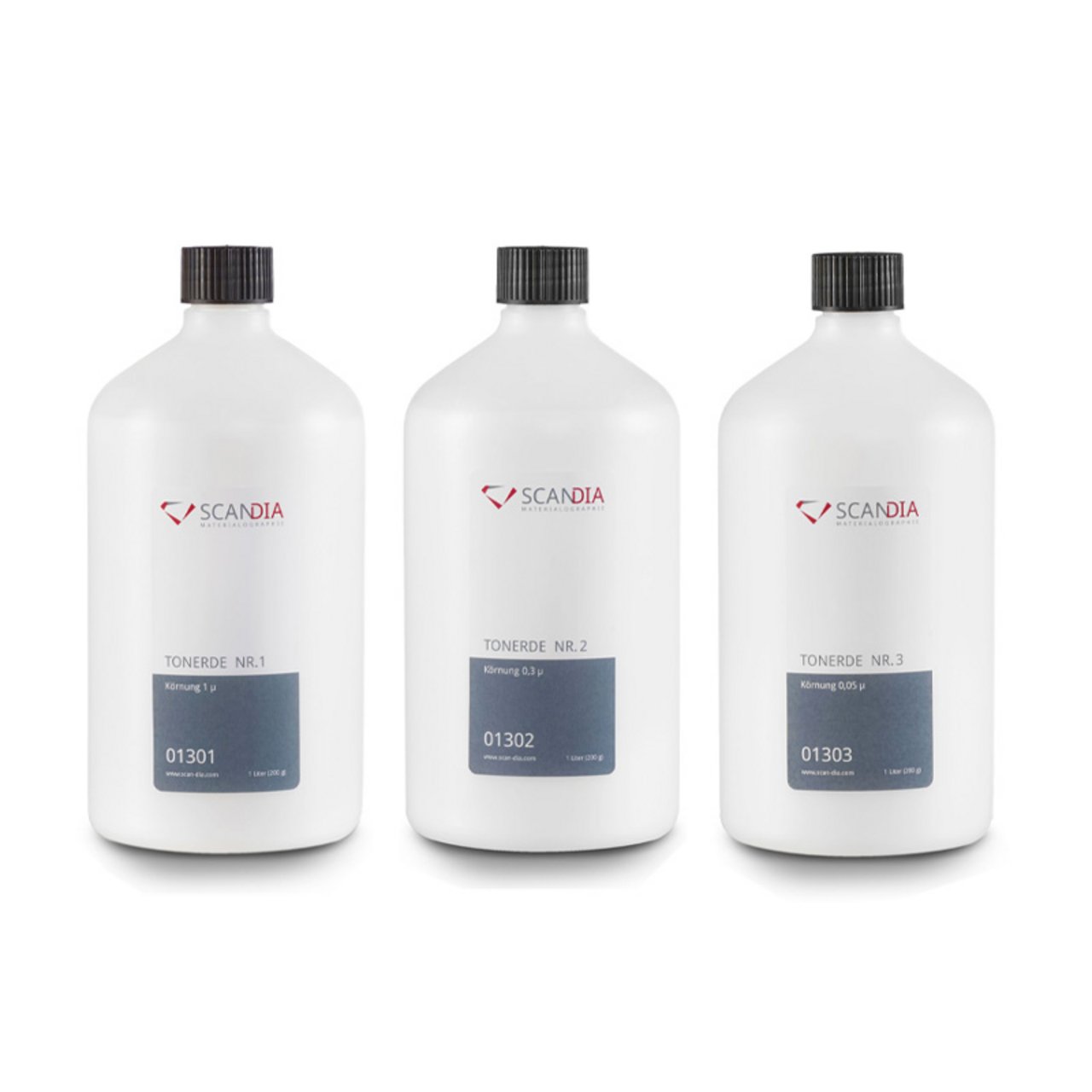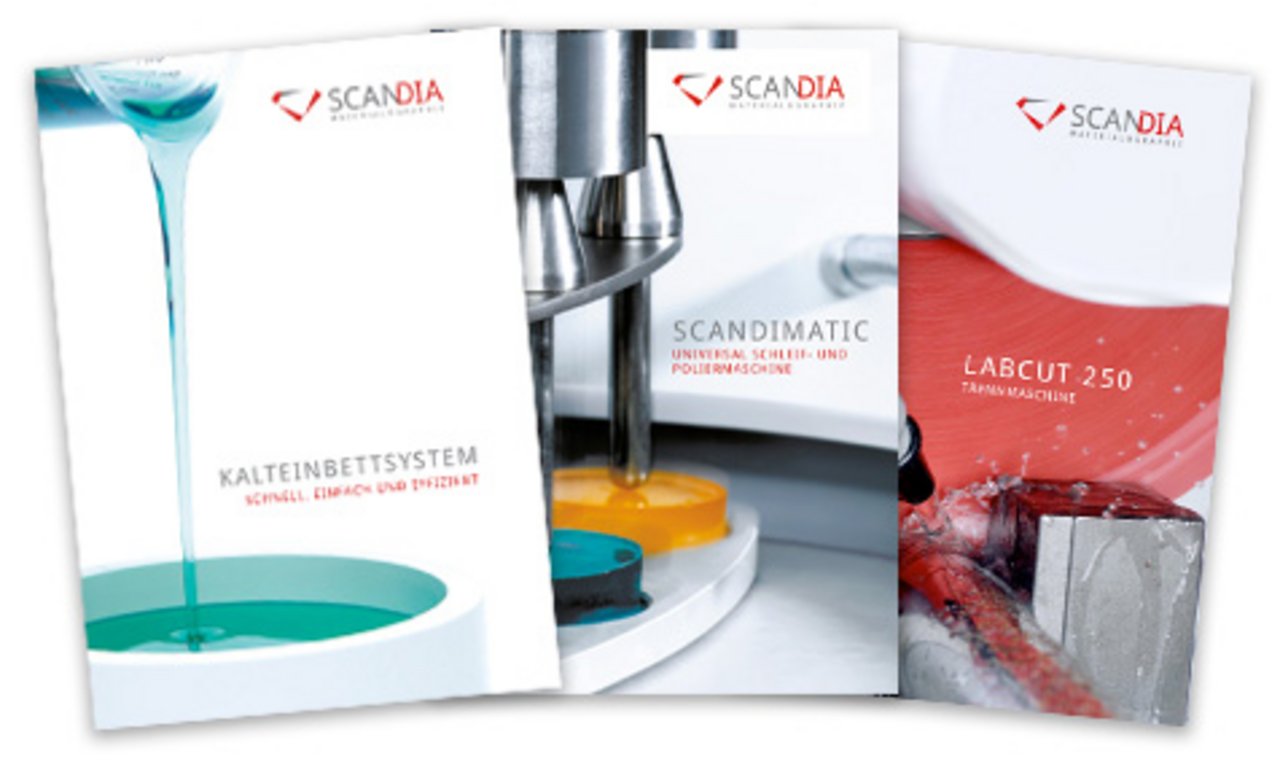Just like grinding, the materialographic polishing process using metallographic polishing agents is based on material removal by machining. However, polishing is performed using much finer grit sizes, assuring considerably lower material removal rates than with grinding.
In brief, two processes can be distinguished in polishing: pre-polishing and final polishing. Polishing with specific metallographic abrasives involves one or several steps in which remaining sample deformations are gradually considerably reduced until scratches are no longer visible on a microscopic scale. Exclusively loose abrasive grains applied to a polishing cloth are used during this process. At the end of the polishing process, the material sample has a polished surface suitable for chemical etching as well as for subsequent microstructure evaluations.
SCAN-DIA offers a comprehensive range of products to help you achieving such precise sample surfaces. Our metallographic polishing materials are exclusively manufactured from high quality constituents.
Diamond has the edge on aluminium oxide Al2O3 when it comes to hardness, sharpness, and cutting ability, making it the most frequently used polishing agent. During the materialographic polishing process, diamond is used in diamond pastes or diamond suspensions. Aluminium oxide Al2O3 (alumina) is only rarely used these days. It can be applied for softer materials during the final polishing step with a grit 1 – 0.25 ?. Silicon dioxide, SiO2, in colloidal suspension may also be used as extra-fine polishing agent.
During the sample preparation process, not only polishing agents but also appropriate polishing pads and lubricants are required. Special cloths made of synthetic fibres, felt, flock, or wool can be used as polishing pads. They are selected according to the requirements. Lubricants (Extender) are added during the polishing process for cooling and lubrication. They are applied in small amounts to obtain an optimum moisture content on the polishing cloth.
In order to ensure optimal preparation results, it is recommended to apply perfectly matched metallographic polishing materials, polishing cloths, and lubricants, such as those available in SCAN-DIA's diamond polishing system.
For more information, see the SCAN-DIA special brochure "Polishing System".
Information
In the field of materialography, part of materials sciences, the structure of ferrous and non-ferrous materials (such as composites, ceramics, and plastics) is studied.
"Metallography" is the study of purely metallic materials.
Materialography wants to quantitatively and qualitatively analyze microstructures by means of various microscope technologies. Statements are made relating to the microstructure as well as to the properties of a material.
First step of the work process is the sample preparation. A material sample is prepared for the microscopic examination of its crystalline structure.
A scratch-free polished section providing a sharp and smooth sample surface is produced, allowing for a representative observation of the material structure. During the preparation, it is particularly important to avoid deformation, smearing, or scratches. Therefore, precise working is required using high quality grinding, polishing, and cleaning agents. Furthermore, depending on the observation criteria, the section may be etched using various solutions.
In general, the materials scientist needs a broad knowledge of material properties, material production, and further material processing in order to avoid preparation errors and errors during the structural analysis.
Materials scientists work in the fields of quality assurance, in failure analysis, and in the research and development domain.
The microscopic examination of the materials provides important conclusions on the production conditions and thus helps to assess production processes as well as to shed light on cases of failure. Moreover, the results of materialographic research build the basis for the development of new materials that are optimally adapted to their respective operating conditions.
Contact
Our experts are happy to answer your questions. SCAN-DIA has a dedicated team of professionals who provide in-depth expertise to offer you personalised support and ensure you get the best possible solution.
Whether you have questions about SCAN-DIA products, technical problems or industry issues, don't hesitate to call. They will be happy to help you with your concerns.


